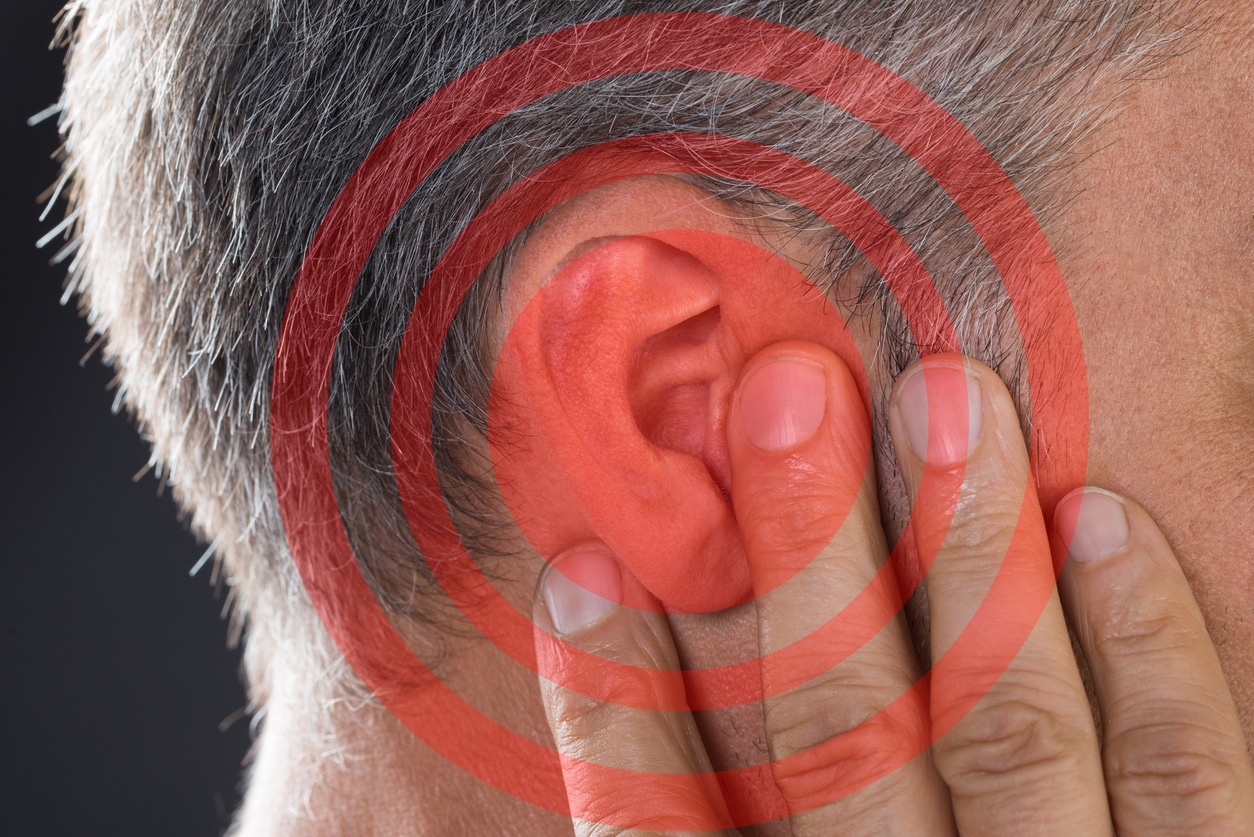If you regularly experience, or have experienced before, a phantom noise in your ear, that is tinnitus. It’s regularly described as a “ringing in the ear,” but it can also sound like a humming, buzzing, whooshing or clicking sound. Tinnitus is quite common, affecting an estimated 10% of the American population each year. Yet, despite its prevalence, everyone experiences tinnitus differently.

Tinnitus itself is not a condition—in fact, it is a symptom of something else, ranging from loud noise to injury to heart disease. It’s usually a sign of some injury, damage or dysfunction of the ear or auditory nerve. It can happen in one ear or both, and it can be temporary or permanent. With all these variables, tinnitus is hard to nail down, so we tend to categorize tinnitus into two broad categories: subjective and objective.
Subjective Tinnitus
This is the most common type of tinnitus. Subjective tinnitus is, as the name suggests, when only you can hear the phantom noise; even if it sounds unbearably loud to you, no one else can detect it. There are a number of causes associated with subjective tinnitus. Some include:
- Loud noise exposure
- Age-related hearing loss
- Certain medications, known as ototoxic medications
- High blood pressure
- Diabetes
- Ear infection
- Migraine
- Brain injury or neck injury
- Brain tumor
Subjective is one big category, but it has smaller subtypes that get more specific according to how the tinnitus sounds and what causes it.
Somatic
Somatic tinnitus is a subtype of subjective tinnitus. It may also be referred to as conductive or somatosensory tinnitus. This kind of tinnitus is linked to body movement and touch. If your tinnitus gets louder or changes pitch when you move your body or touch certain points of it, that’s somatic tinnitus. It may also be brought on by pressure, temperature changes and pain.
Neurological
Neurological tinnitus, also known as sensory tinnitus, originates from a neurological disorder. It indicates dysfunction in the auditory processing center of the brain. The most common neurological disorder associated with sensory tinnitus is Ménière’s disease, which can also cause dizziness and other balance issues.
Objective Tinnitus
Objective tinnitus can be heard by others, but not loud enough to be heard by someone standing next to you—it would require a stethoscope or sensitive microphone. This kind of tinnitus is much more uncommon, and it occurs if a condition affects the mechanical structures of and near your ears. Some causes of objective tinnitus are muscular- or vascular-related, including:
- Abnormal blood vessel development near your ears
- Muscle contractions or spasms
- Vascular disease
- High blood pressure
- Aneurysm
- TMJ
Pulsatile
Like subjective tinnitus, objective tinnitus has subtypes, as well. The most common of these is pulsatile tinnitus, where the tinnitus sounds are rhythmic, in time with your heartbeat. This is due to the fact that objective tinnitus is so closely related to blood vessels and heartbeat: you can hear your heartbeat within the inner structures of your ears.
How To Find Relief from Tinnitus
As mentioned, tinnitus itself is not a condition; therefore, you must treat the underlying cause in order to find relief from tinnitus. The first step is finding out what kind of tinnitus you experience and what caused it. We at San Diego Hearing Center can perform tinnitus evaluations, and from there come up with a specialized tinnitus management plan that addresses your kind of tinnitus. Call today to make an appointment.